Abstract
1. [131I]albumin transport from alveolus to perfusion fluid was evaluated in an isolated dog lung lobe preparation perfused at constant pressure with homologous plasma. The alveoli were filled with a 1:1 mixture of Ringer—Tyrode solution and plasma.
2. For twenty-three lung lobes, an average control permeability coefficient of the alveolocapillary membrane for albumin was found to be 1·9 × 10-9 cm/sec with a range of (0·3-5·5) × 10-9 cm/sec.
3. Alloxan in concentrations of 0·22-2·50 mg/ml. perfusate was observed to increase the alveolocapillary membrane permeability to [131I]albumin with a positive correlation between dose and effect. The larger doses of alloxan increased the permeability by a factor of ten or more.
4. Glutathione (GSH), administered intravascularly 2 min before alloxan in an 8:1 molar ratio of GSH:alloxan, delayed the onset of the permeability increase due to alloxan by 40-60 min but did not influence the maximum increase in permeability.
5. Histamine administered intravascularly in concentrations from 0·02 to 0·50 μg/ml. perfusate had no significant effect on the alveolocapillary membrane permeability to [131I]albumin.
Full text
PDF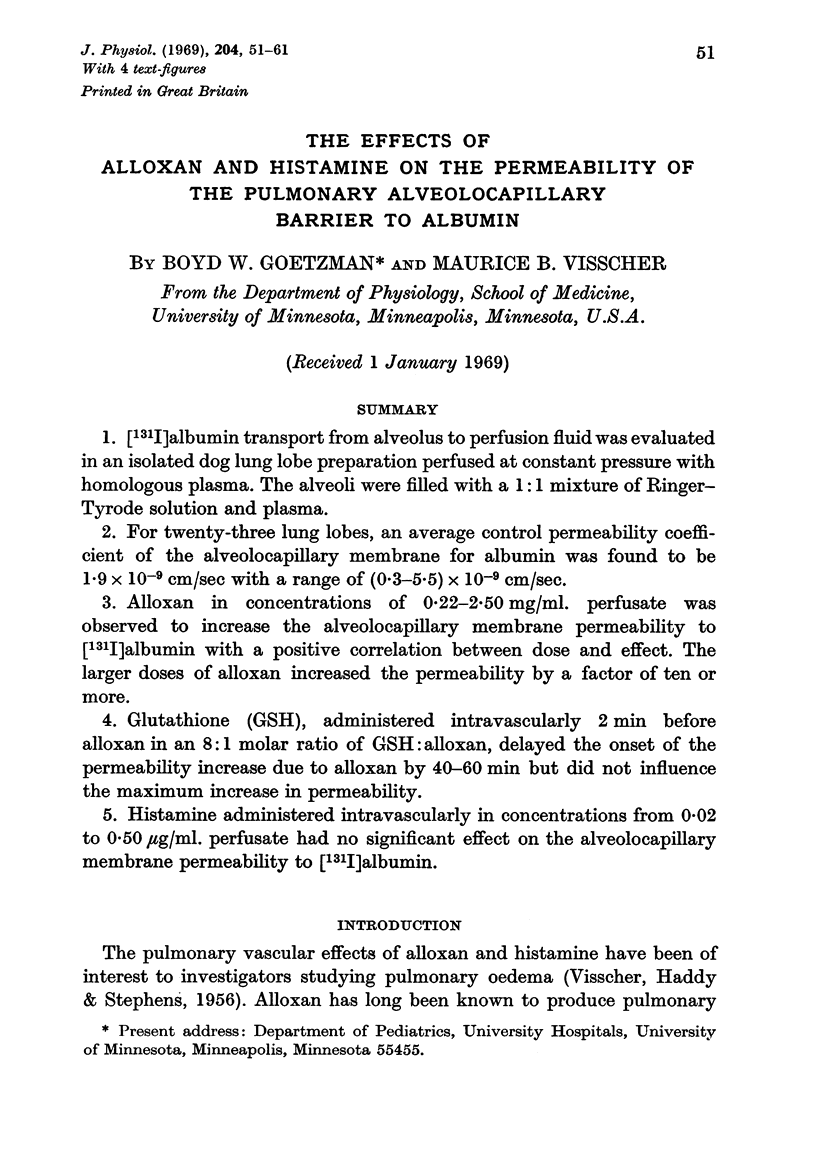
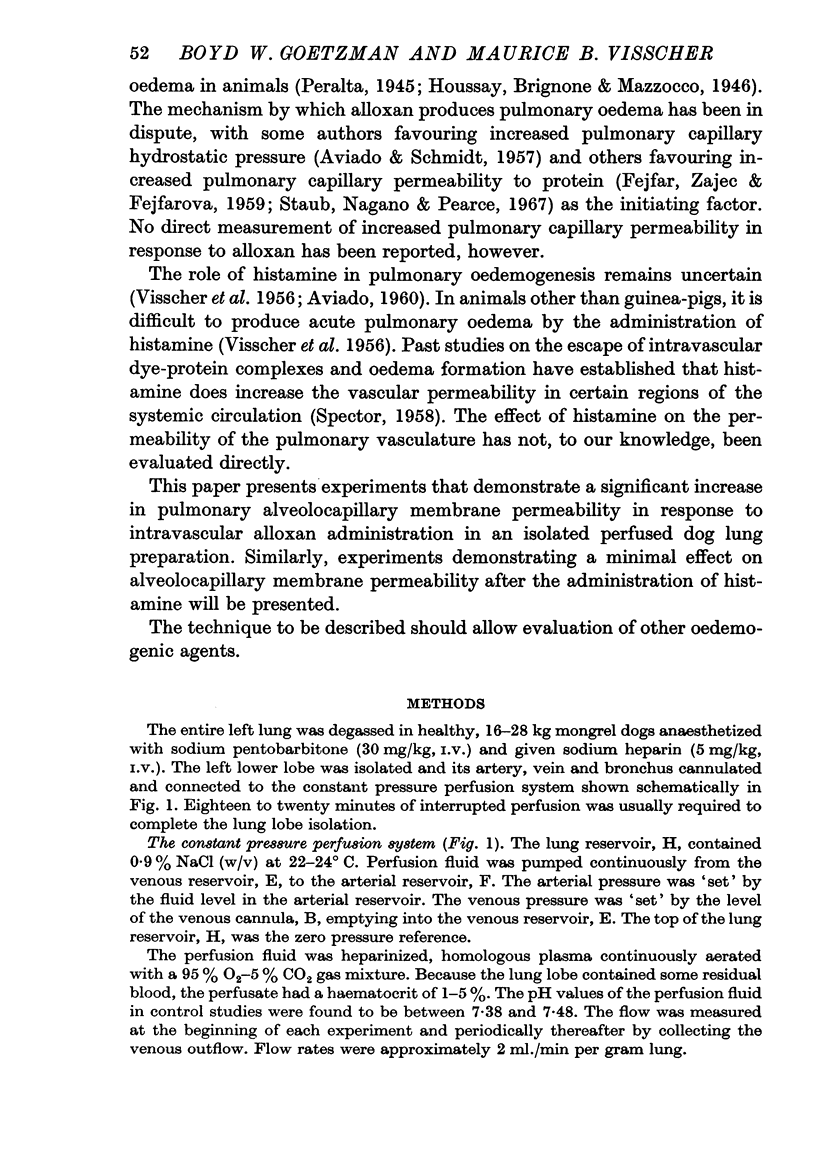
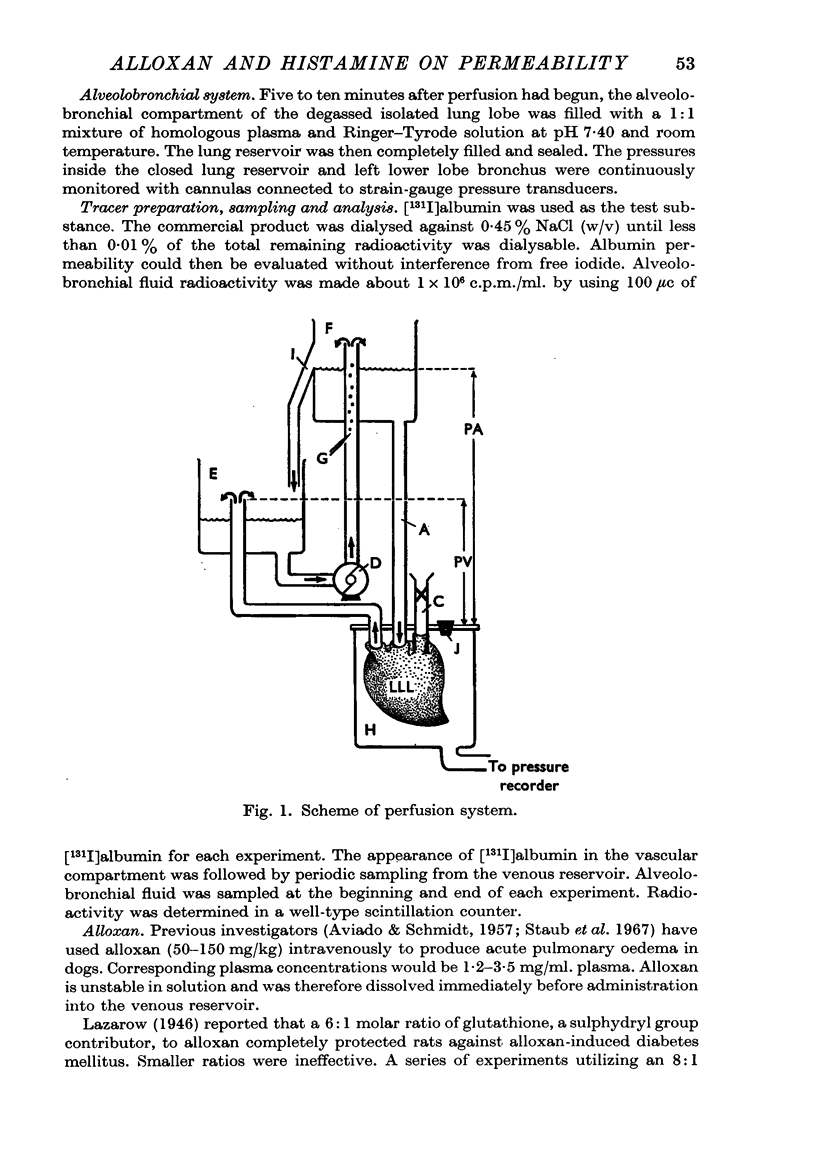
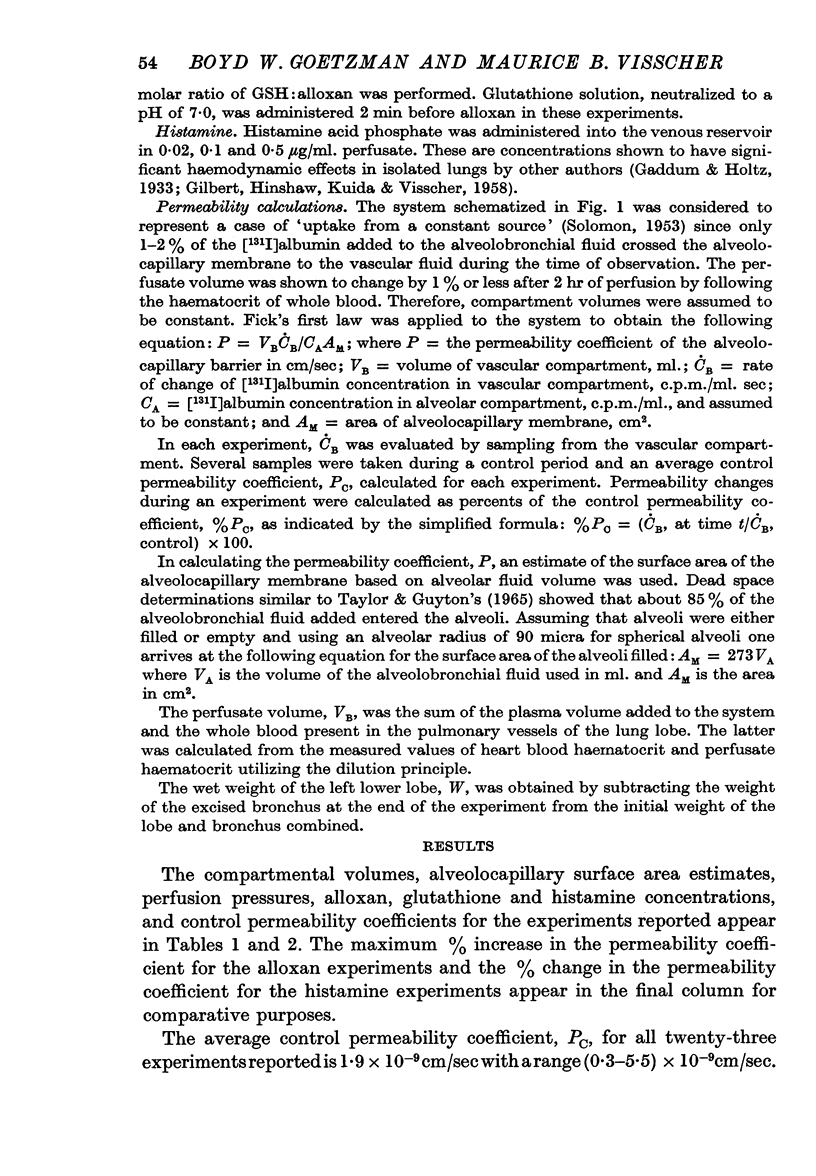
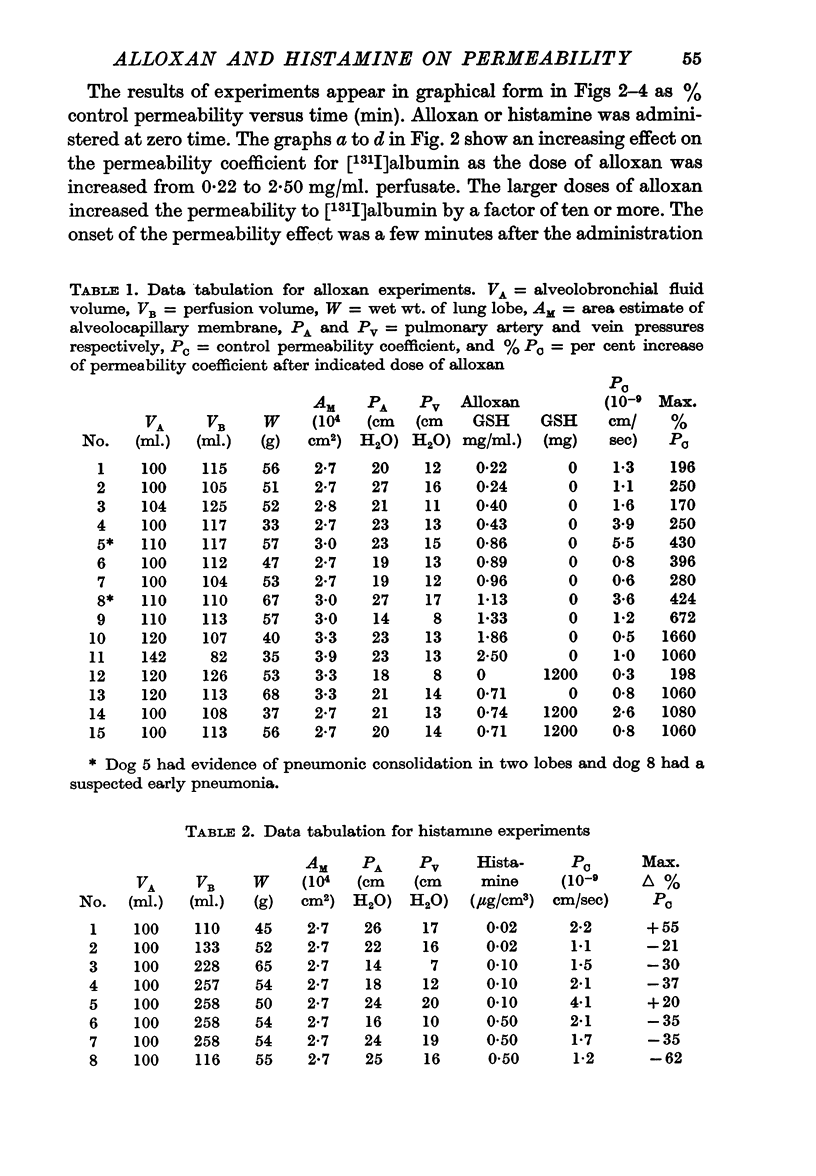
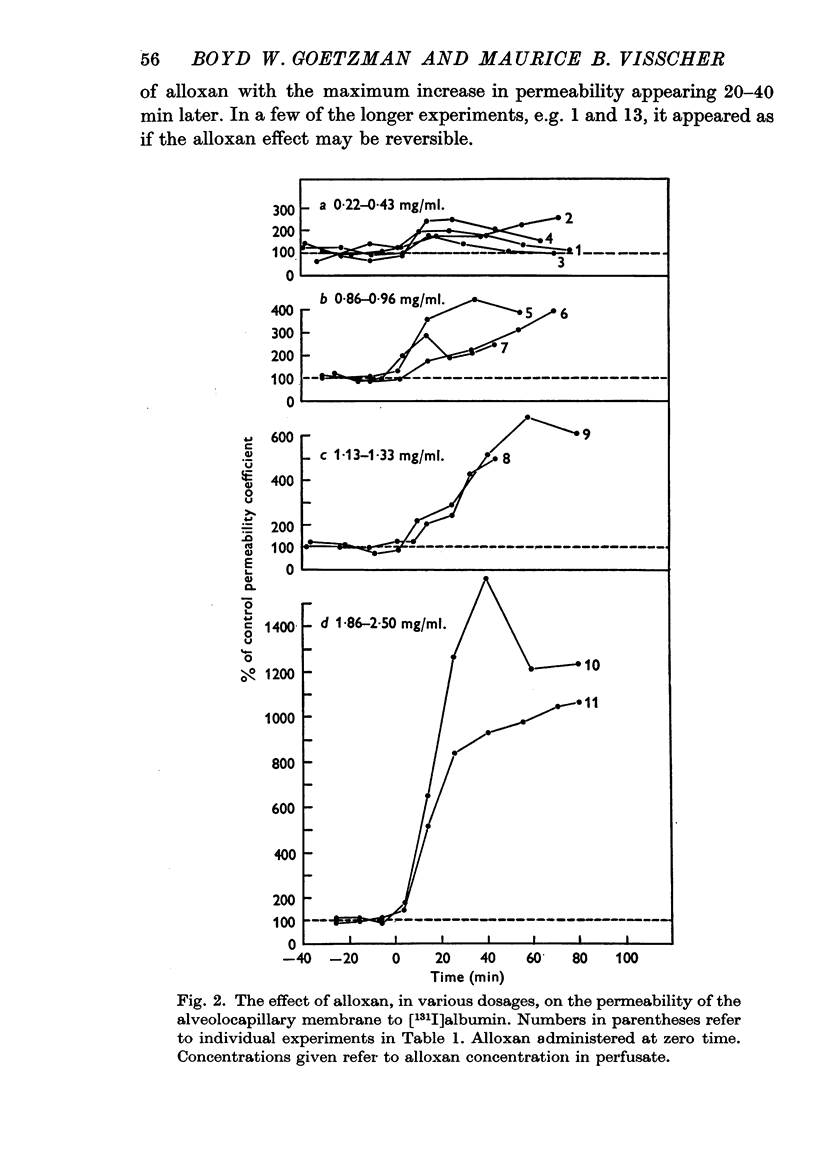
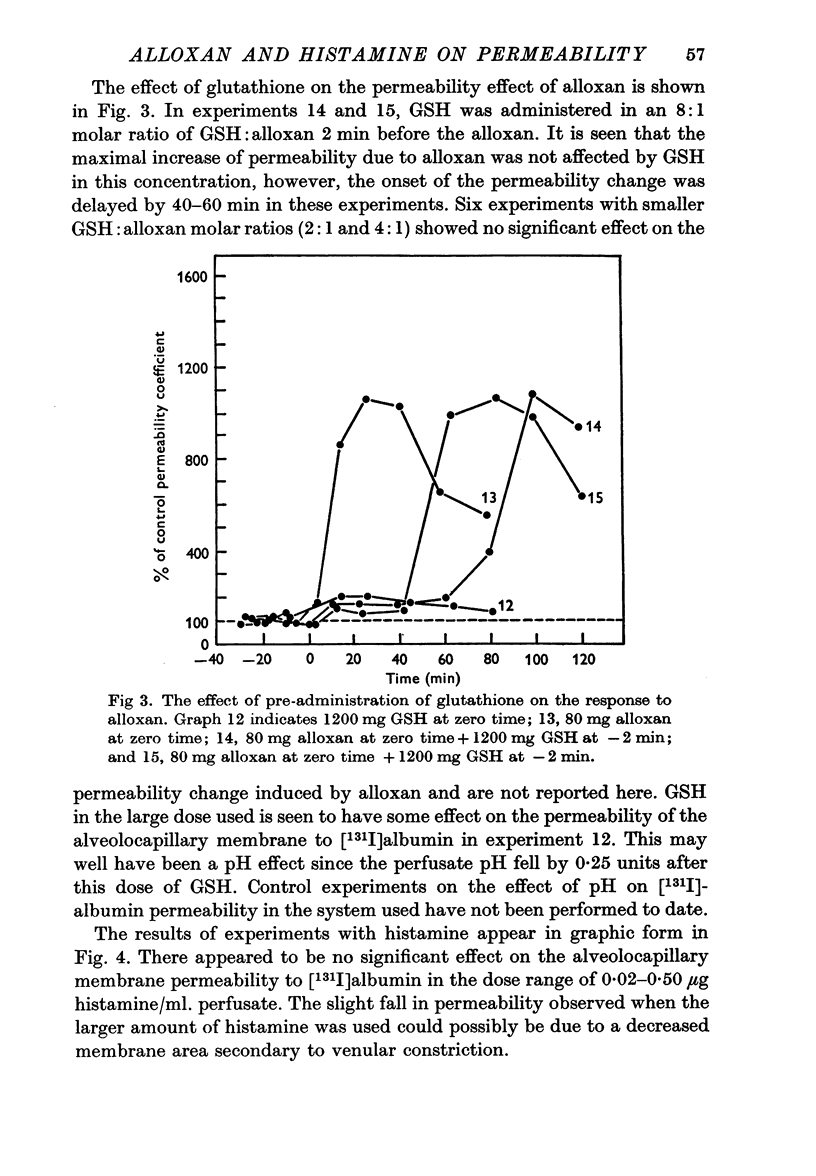
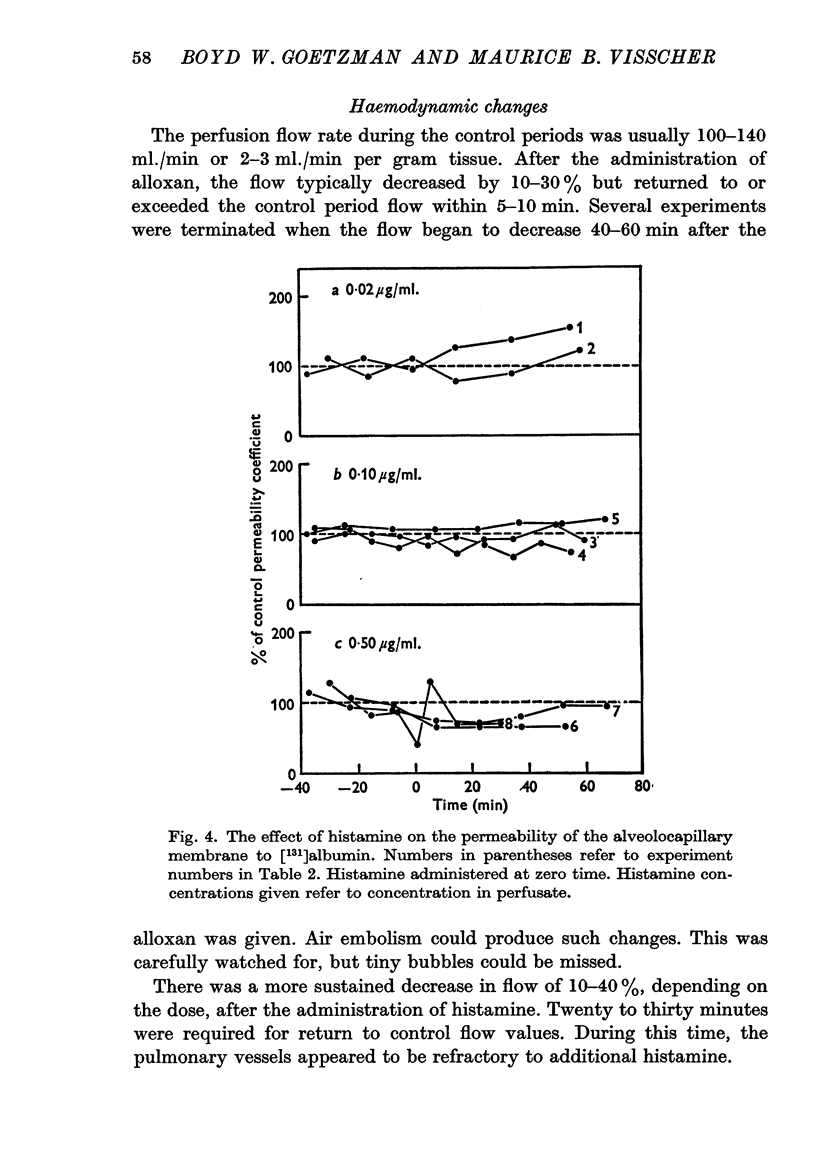
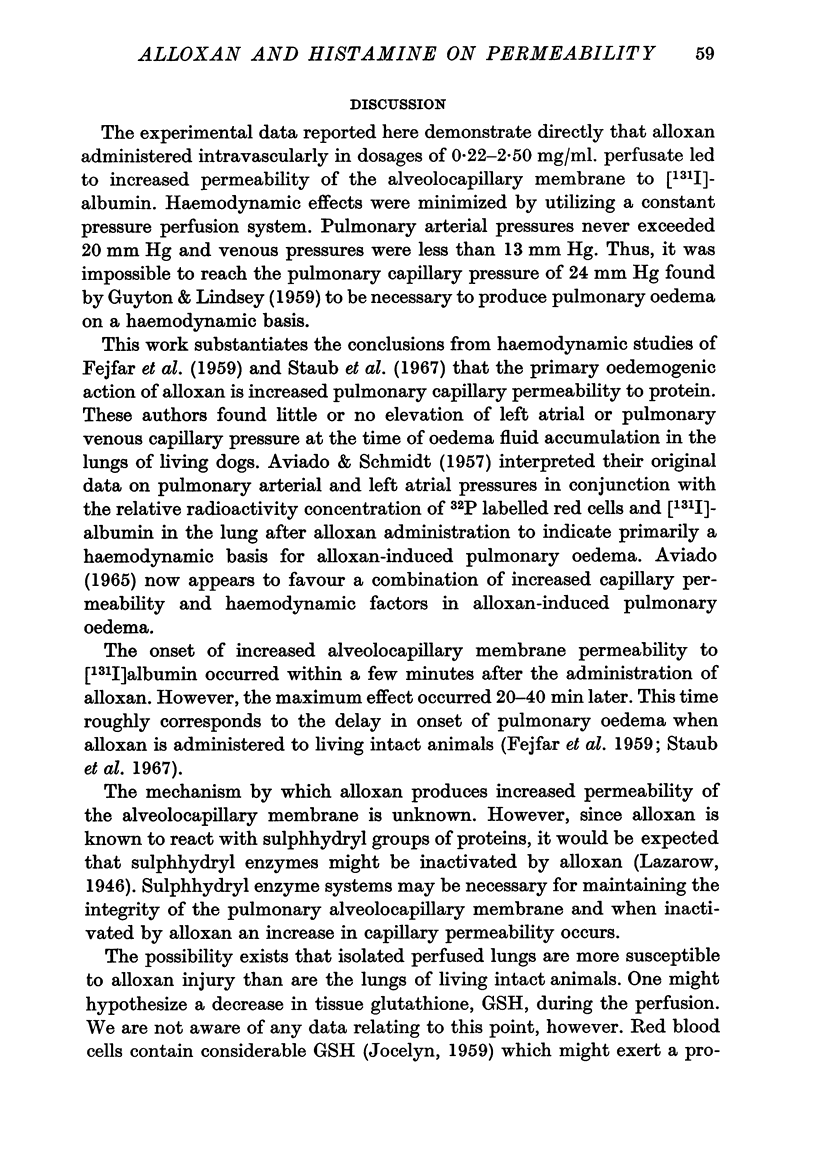
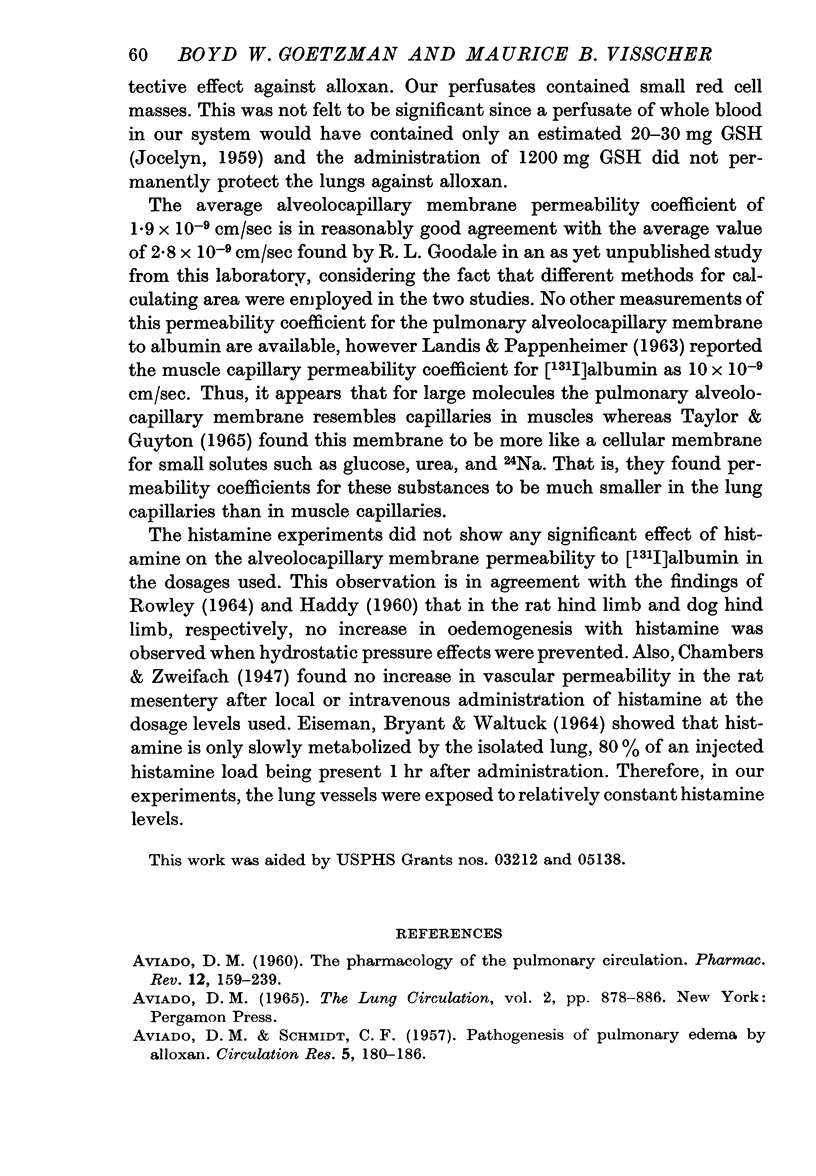
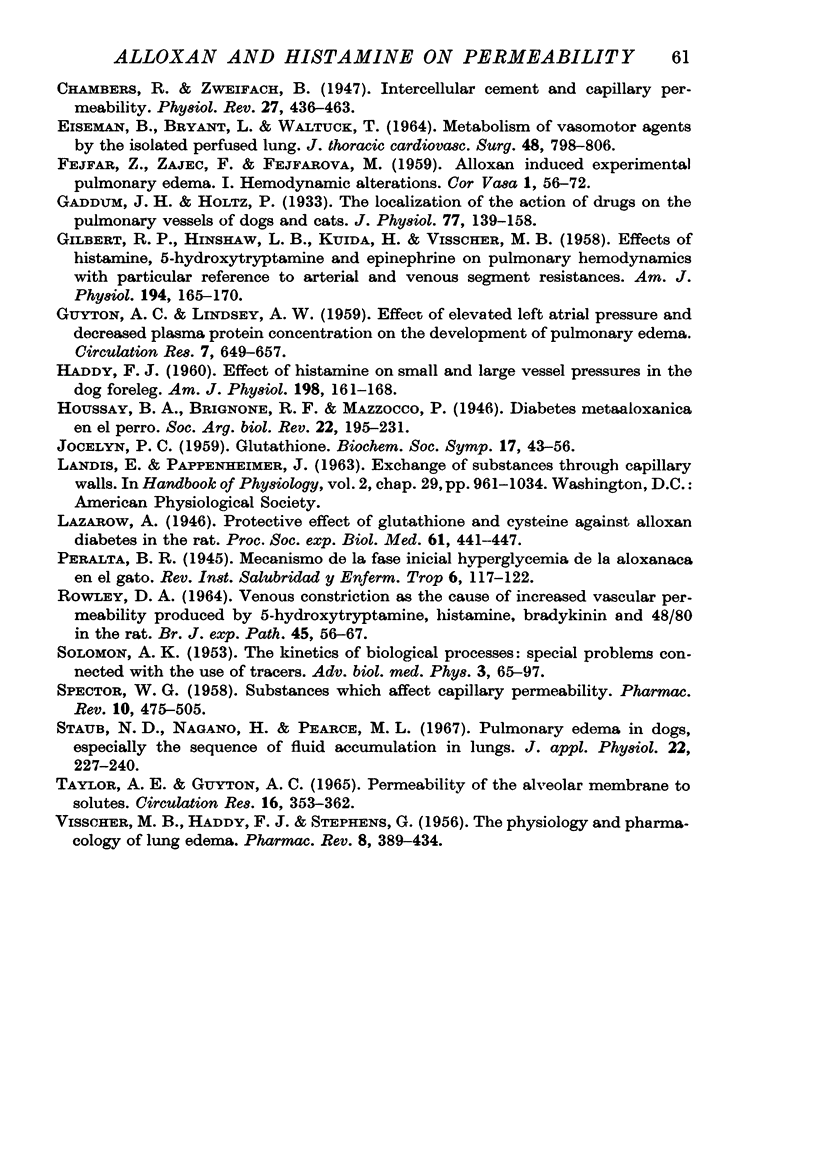
Selected References
These references are in PubMed. This may not be the complete list of references from this article.
- AVIADO D. M., Jr, SCHMIDT C. F. Pathogenesis of pulmonary edema by alloxan. Circ Res. 1957 Mar;5(2):180–186. doi: 10.1161/01.res.5.2.180. [DOI] [PubMed] [Google Scholar]
- AVIADO D. M. The pharmacology of the pulmonary circulation. Pharmacol Rev. 1960 Jun;12:159–239. [PubMed] [Google Scholar]
- EISEMAN B., BRYANT L., WALTUCH T. METABOLISM OF VASOMOTOR AGENTS BY THE ISOLATED PERFUSED LUNG. J Thorac Cardiovasc Surg. 1964 Nov;48:798–806. [PubMed] [Google Scholar]
- GILBERT R. P., HINSHAW L. B., KUIDA H., VISSCHER M. B. Effects of histamine, 5 hydroxytryptamine and epinephrine on pulmonary hemodynamics with particular reference to arterial and venous segment resistances. Am J Physiol. 1958 Jul;194(1):165–170. doi: 10.1152/ajplegacy.1958.194.1.165. [DOI] [PubMed] [Google Scholar]
- GUYTON A. C., LINDSEY A. W. Effect of elevated left atrial pressure and decreased plasma protein concentration on the development of pulmonary edema. Circ Res. 1959 Jul;7(4):649–657. doi: 10.1161/01.res.7.4.649. [DOI] [PubMed] [Google Scholar]
- Gaddum J. H., Holtz P. The localization of the action of drugs on the pulmonary vessels of dogs and cats. J Physiol. 1933 Jan 16;77(2):139–158. doi: 10.1113/jphysiol.1933.sp002958. [DOI] [PMC free article] [PubMed] [Google Scholar]
- HADDY F. J. Effect of histamine on small and large vessel pressures in the dog foreleg. Am J Physiol. 1960 Jan;198:161–168. doi: 10.1152/ajplegacy.1960.198.1.161. [DOI] [PubMed] [Google Scholar]
- HADDY F. J., STEPHENS G., VISSCHER M. B. The physiology and pharmacology of lung edema. Pharmacol Rev. 1956 Sep;8(3):389–434. [PubMed] [Google Scholar]
- JOCELYN P. C. Glutathione metabolism in animals. Biochem Soc Symp. 1959;17:43–65. [PubMed] [Google Scholar]
- ROWLEY D. A. VENOUS CONSTRICTION AS THE CAUSE OF INCREASED VASCULAR PERMEABILITY PRODUCED BY 5-HYDROXYTRYPTAMINE, HISTAMINE, BRADYKININ AND 48/80 IN THE RAT. Br J Exp Pathol. 1964 Feb;45:56–67. [PMC free article] [PubMed] [Google Scholar]
- SOLOMON A. K. The kinetics of biological processes; special problems connected with the use of tracers. Adv Biol Med Phys. 1953;3:65–97. doi: 10.1016/b978-1-4831-9926-9.50006-9. [DOI] [PubMed] [Google Scholar]
- SPECTOR W. G. Substances which affect capillary permeability. Pharmacol Rev. 1958 Dec;10(4):475–505. [PubMed] [Google Scholar]
- Staub N. C., Nagano H., Pearce M. L. Pulmonary edema in dogs, especially the sequence of fluid accumulation in lungs. J Appl Physiol. 1967 Feb;22(2):227–240. doi: 10.1152/jappl.1967.22.2.227. [DOI] [PubMed] [Google Scholar]
- TAYLOR A. E., GUYTON A. C., BISHOP V. S. PERMEABILITY OF THE ALVEOLAR MEMBRANE TO SOLUTES. Circ Res. 1965 Apr;16:353–362. doi: 10.1161/01.res.16.4.353. [DOI] [PubMed] [Google Scholar]


